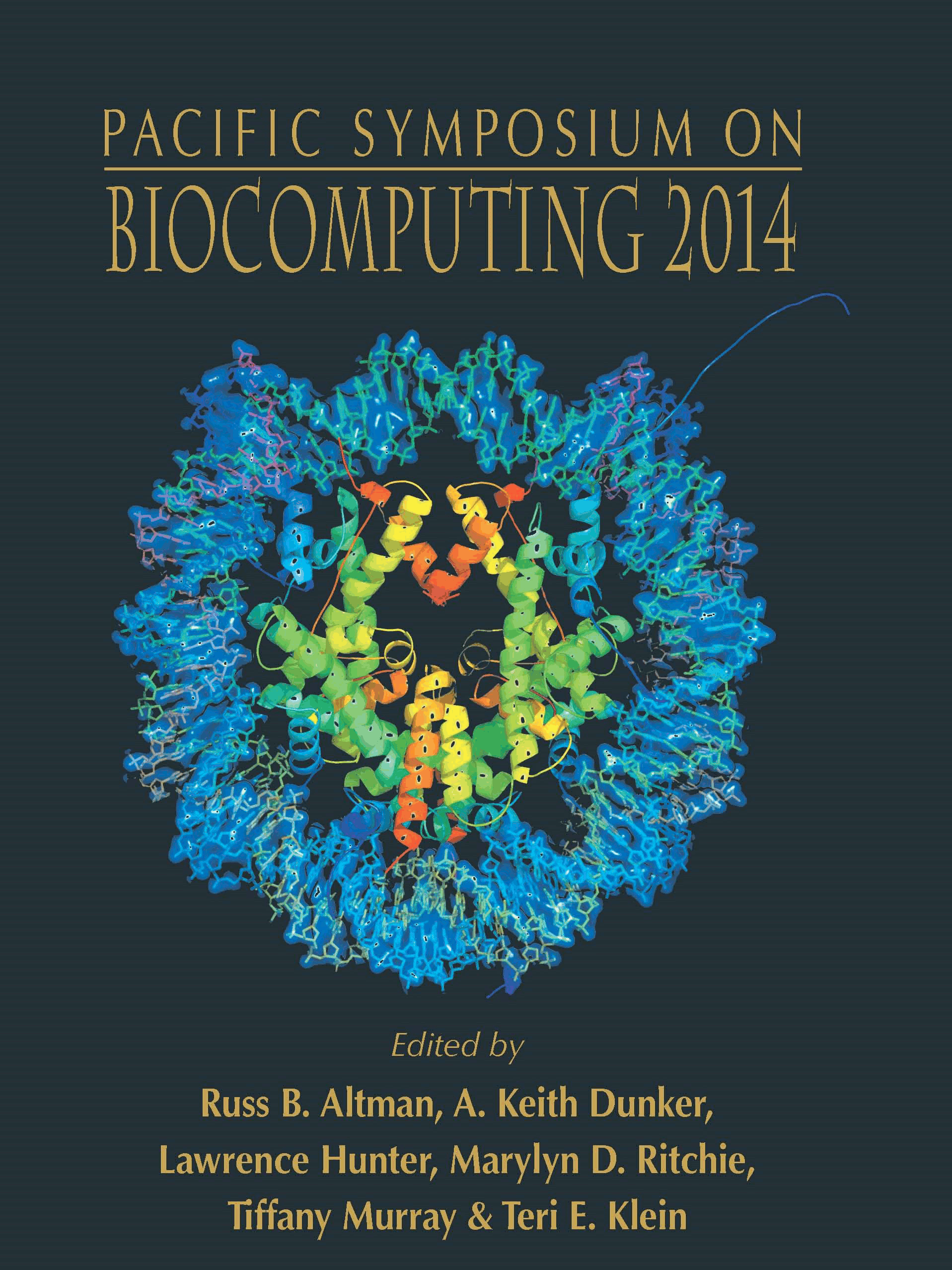Environment-Wide Association Study (EWAS) for Type 2 Diabetes in the Marshfield Personalized Medicine Research Project Biobank
Molly A. Hall, Scott M. Dudek, Robert Goodloe, Dana C. Crawford, Sarah A. Pendergrass, Peggy Peissig, Murray Brilliant, Catherine A. McCarty, Marylyn D. Ritchie
1-2Center for Systems Genomics, Department of Biochemistry and Molecular Biology, 3-4Center for Human Genetics Research, Vanderbilt University, 5Center for Systems Genomics, Department of Biochemistry and Molecular Biology, 6-7The Marshfield Clinic, 8Essentia Institute of Rural Health
Email: mah546@psu.edu, sud23@psu.edu, robert.goodloe@chgr.mc.vanderbilt.edu, crawford@chgr.mc.vanderbilt.edu, sap29@psu.edu, Peissig.Peggy@securityhealth.org, BRILLIANT.MURRAY@mcrf.mfldclin.edu,CMcCarty@eirh.org, Marylyn.ritchie@psu.edu
Pacific Symposium on Biocomputing 19:200-211(2014)

Abstract
Environment-wide association studies (EWAS) provide a way to uncover the environmental mechanisms involved in complex traits in a high-throughput manner. Genome-wide association studies have led to the discovery of genetic variants associated with many common diseases but do not take into account the environmental component of complex phenotypes. This EWAS assesses the comprehensive association between environmental variables and the outcome of type 2 diabetes (T2D) in the Marshfield Personalized Medicine Research Project Biobank (Marshfield PMRP). We sought replication in two National Health and Nutrition Examination Surveys (NHANES). The Marshfield PMRP currently uses four tools for measuring environmental exposures and outcome traits: 1) the PhenX Toolkit includes standardized exposure and phenotypic measures across several domains, 2) the Diet History Questionnaire (DHQ) is a food frequency questionnaire, 3) the Measurement of a Personís Habitual Physical Activity scores the level of an individualís physical activity, and 4) electronic health records (EHR) employs validated algorithms to establish T2D case-control status . Using PLATO software, 314 environmental variables were tested for association with T2D using logistic regression, adjusting for sex, age, and BMI in over 2,200 European Americans. When available, similar variables were tested with the same methods and adjustment in samples from NHANES III and NHANES 1999-2002. Twelve and 31 associations were identified in the Marshfield samples at p<0.01 and p<0.05, respectively. Seven and 13 measures replicated in at least one of the NHANES at p<0.01 and p<0.05, respectively, with the same direction of effect. The most significant environmental exposures associated with T2D status included decreased alcohol use as well as increased smoking exposure in childhood and adulthood. The results demonstrate the utility of the EWAS method and survey tools for identifying environmental components of complex diseases like type 2 diabetes. These high-throughput and comprehensive investigation methods can easily be applied to investigate the relation between environmental exposures and multiple phenotypes in future analyses.
[Full-Text PDF] [PSB Home Page]